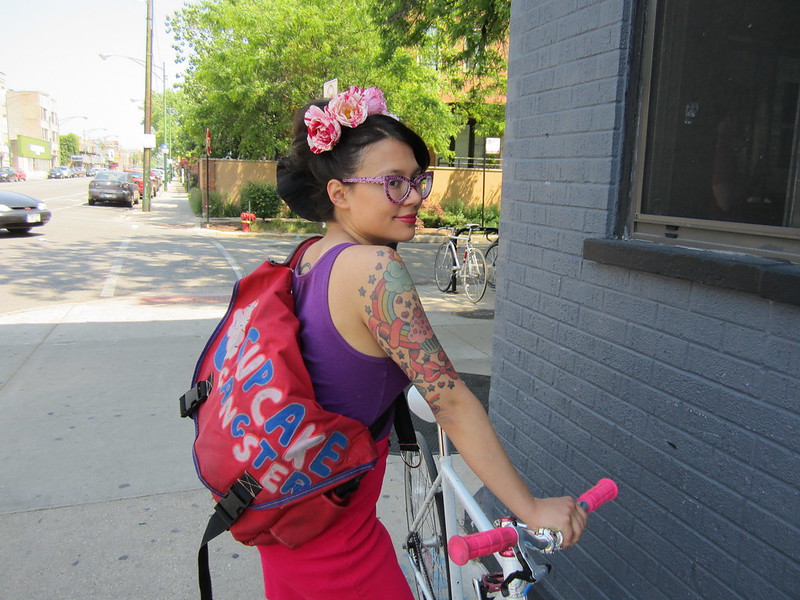[flickr]photo:3389991851[/flickr]
“Biker Boy” by Alice Dubois. Alice’s paintings are on display this month at Charmers Cafe, 1500 W. Jarvis, and the Evanston Public Library, 1703 Orrington.
[Ed. note: This article was contributed by Carly Syms, a grad student at Northwestern University’s Medill School of Journalism. The piece also appears on the Medill Reports website. Carly completed her undergraduate degree at the University of Wisconsin. She eventually wants to get into sports journalism.]
Chicagoans are speaking out about the city’s active transportation initiatives amidst growing research that shows walking and biking to work can result in extensive health benefits.
One of the biggest improvement projects under way is the Bike 2015 Plan, which the city says is meant to “make bicycling an integral part of daily life in Chicago,” and for many residents, that begins with safety.
John Greenfield, co-founder of GridChicago.com, a blog dedicated to local transportation concerns, said that while many of the city’s initiatives have yielded positive results, there’s still room for improvement.
“Too much car traffic is one of the main obstacles to safe, pleasant conditions for walking, biking and transit use,” Greenfield said. “I’d like to see policymakers doing more to discourage driving and fund healthier modes.”
Continue reading Does the City of Chicago do enough to keep pedestrians and bicyclists safe?
